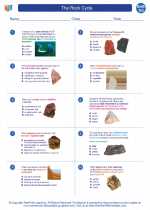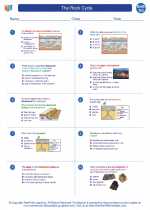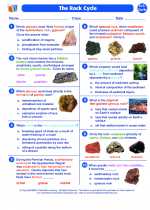Mantle
The mantle is a layer of the Earth that lies between the outer core and the Earth's crust. It is the thickest layer of the Earth, extending from a depth of about 30 kilometers (19 miles) to 2,900 kilometers (1,800 miles) below the Earth's surface. The mantle is composed of solid rock, but it is capable of flowing over long periods of time, a property known as plasticity. The mantle plays a crucial role in the movement of tectonic plates and the Earth's internal heat distribution.
Composition
The mantle is primarily composed of silicate rocks, rich in magnesium and iron. The upper mantle consists of peridotite, a rock made up of the minerals olivine, pyroxene, and garnet. As depth increases, the mantle undergoes changes in mineral composition and physical properties due to increased pressure and temperature.
Physical Properties
The mantle's physical properties are influenced by its high temperature and pressure conditions. The upper mantle is cooler and more rigid, while the lower mantle is hotter and capable of plastic flow. The transition zone between the upper and lower mantle, known as the asthenosphere, exhibits a partial melting behavior, allowing for the movement of tectonic plates.
Study Guide
- Describe the location and thickness of the mantle.
- Explain the composition of the mantle and its primary rock types.
- Discuss the physical properties of the mantle, including its temperature, pressure, and plasticity.
- Explain the role of the mantle in the movement of tectonic plates and the Earth's heat distribution.
- Compare the upper mantle and the lower mantle in terms of temperature, rigidity, and mineral composition.
Understanding the mantle is essential for comprehending the Earth's internal structure and its dynamic processes. By studying the mantle, we gain insights into plate tectonics, volcanic activity, and the Earth's long-term geological evolution.
.◂Earth Science Worksheets and Study Guides High School. The Rock Cycle

 Worksheet/Answer key
Worksheet/Answer key
 Worksheet/Answer key
Worksheet/Answer key
 Worksheet/Answer key
Worksheet/Answer key
 Vocabulary/Answer key
Vocabulary/Answer key
 Vocabulary/Answer key
Vocabulary/Answer key
 Vocabulary/Answer key
Vocabulary/Answer key
